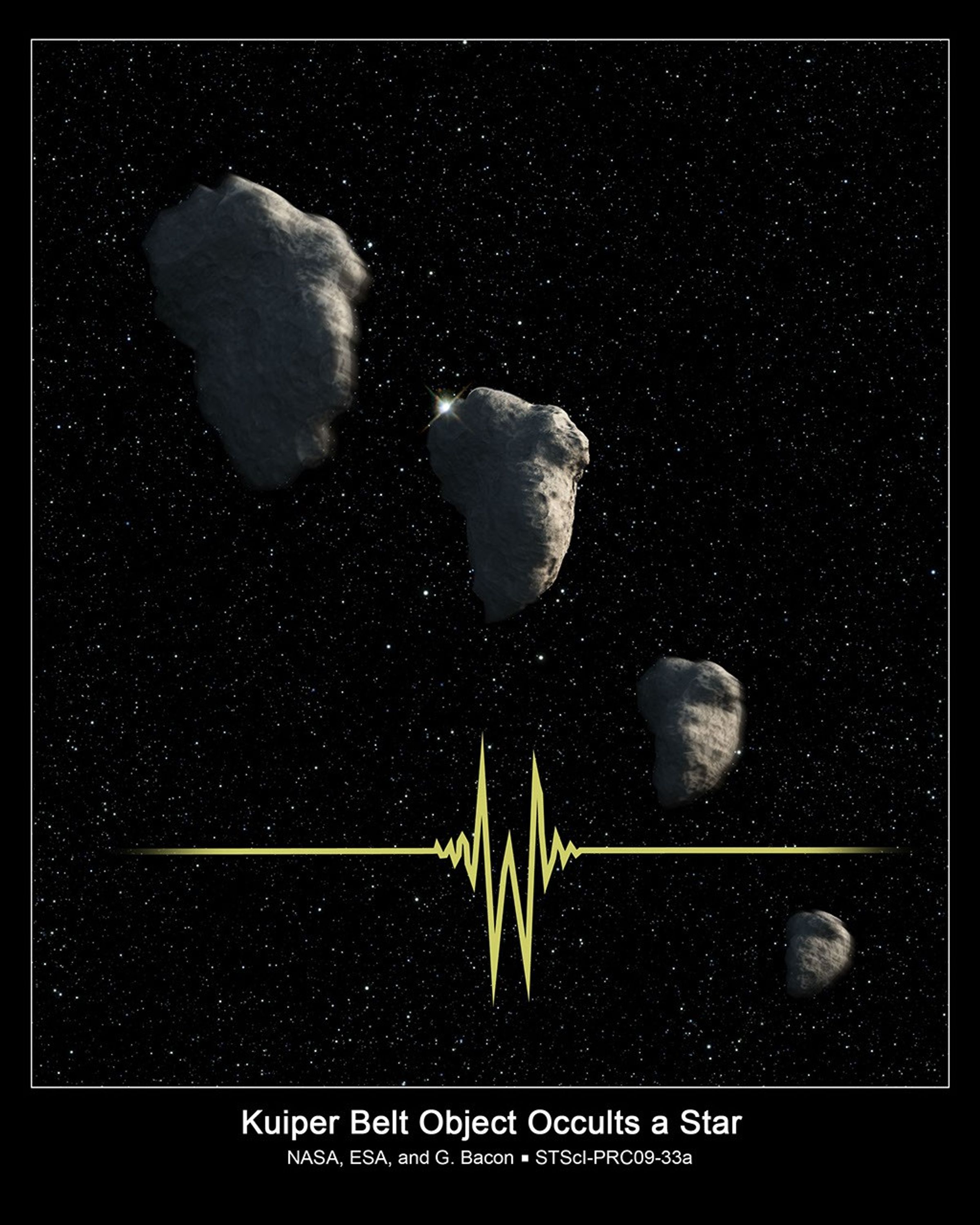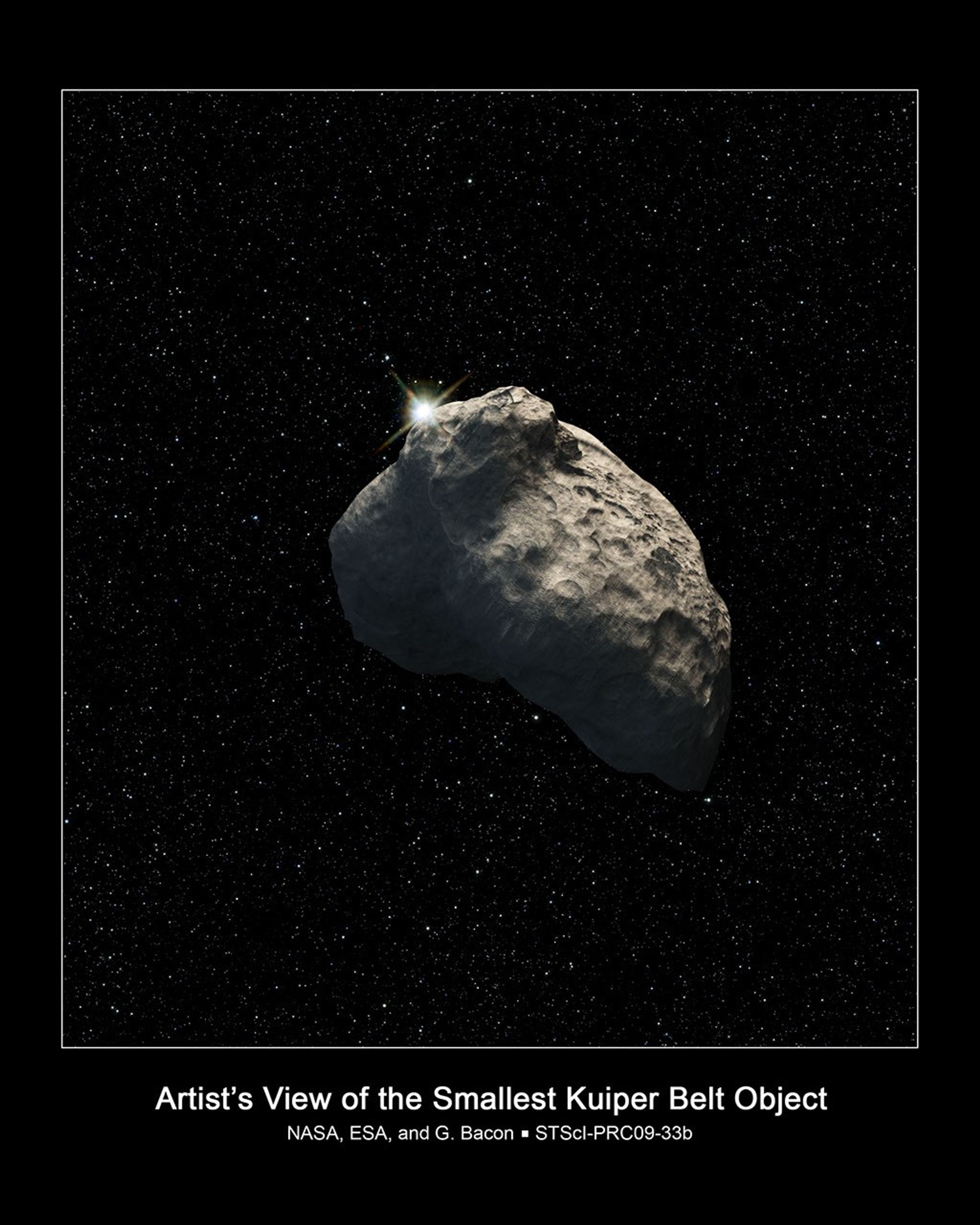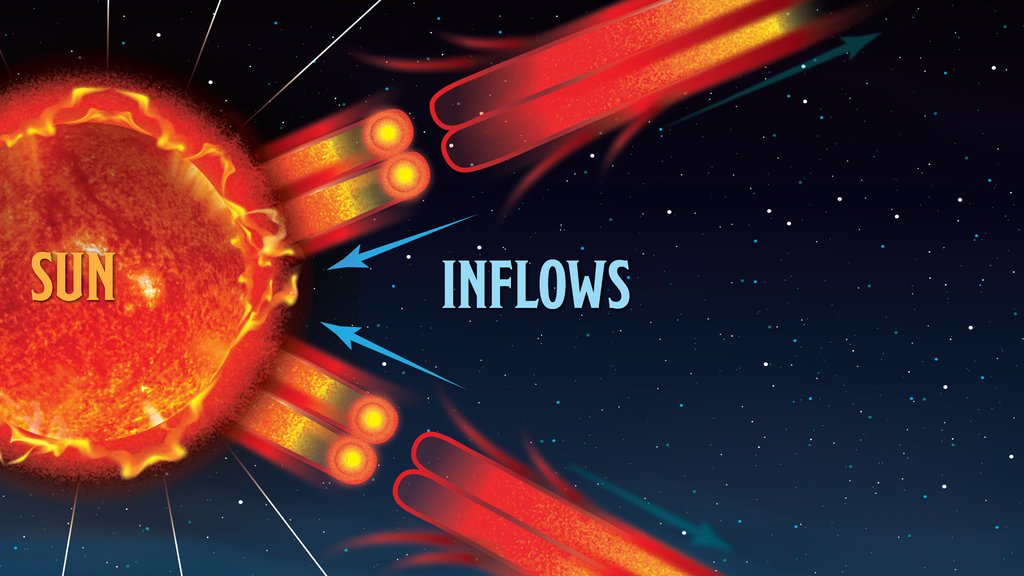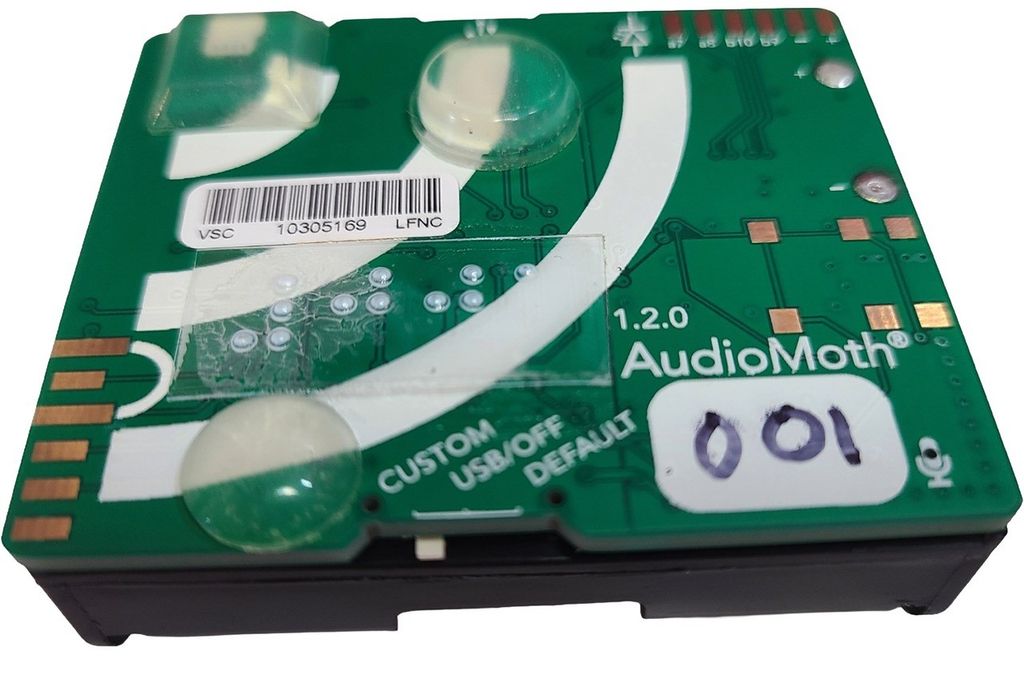1 min read
Kuiper Belt Object Occults Star

This is an artist's impression of a small Kuiper Belt Object (KBO) occulting a star. NASA's Hubble Space Telescope recorded this brief event and allowed astronomers to determine that the KBO was only one-half of a mile across, setting a new record for the smallest object ever seen in the Kuiper Belt.
About the Object
- DistanceDistanceThe physical distance from Earth to the astronomical object. Distances within our solar system are usually measured in Astronomical Units (AU). Distances between stars are usually measured in light-years. Interstellar distances can also be measured in parsecs.4.2 billion miles (6.8 billion kilometers)
- DimensionsDimensionsThe physical size of the object or the apparent angle it subtends on the sky.3,200 feet across
About the Data
- Data DescriptionData DescriptionProposal: A description of the observations, their scientific justification, and the links to the data available in the science archive.
Science Team: The astronomers who planned the observations and analyzed the data. "PI" refers to the Principal Investigator.The science team includes: H. Schlichting (California Institute of Technology/University of Toronto), E. Ofek (California Institute of Technology/Einstein Fellow), M. Wenz (NASA/GSFC), R. Sari (California Institute of Technology/Hebrew University), A. Gal-Yam (Weizmann Institute of Science, Israel), M. Livio and E. Nelan (STScI), and S. Zucker (Tel Aviv University). - InstrumentInstrumentThe science instrument used to produce the data.HST>FGS
- Object DescriptionObject DescriptionThe type of astronomical object.Kuiper Belt Object
- Release DateDecember 16, 2009
- Science ReleaseHubble Finds Smallest Kuiper Belt Object Ever Seen
- Credit
Related Images & Videos

Smallest Kuiper Belt Object Detected
This is an artist's impression of a one-half-mile-diameter Kuiper Belt Object (KBO) that was detected by NASA's Hubble Space Telescope. The icy relic from the early solar system is too small for Hubble to photograph. The object was detected when it passed in front of a...
Share
Details
Last Updated
Aug 17, 2025
Contact
Media
Claire Andreoli
NASA’s Goddard Space Flight Center
Greenbelt, Maryland
claire.andreoli@nasa.gov






























